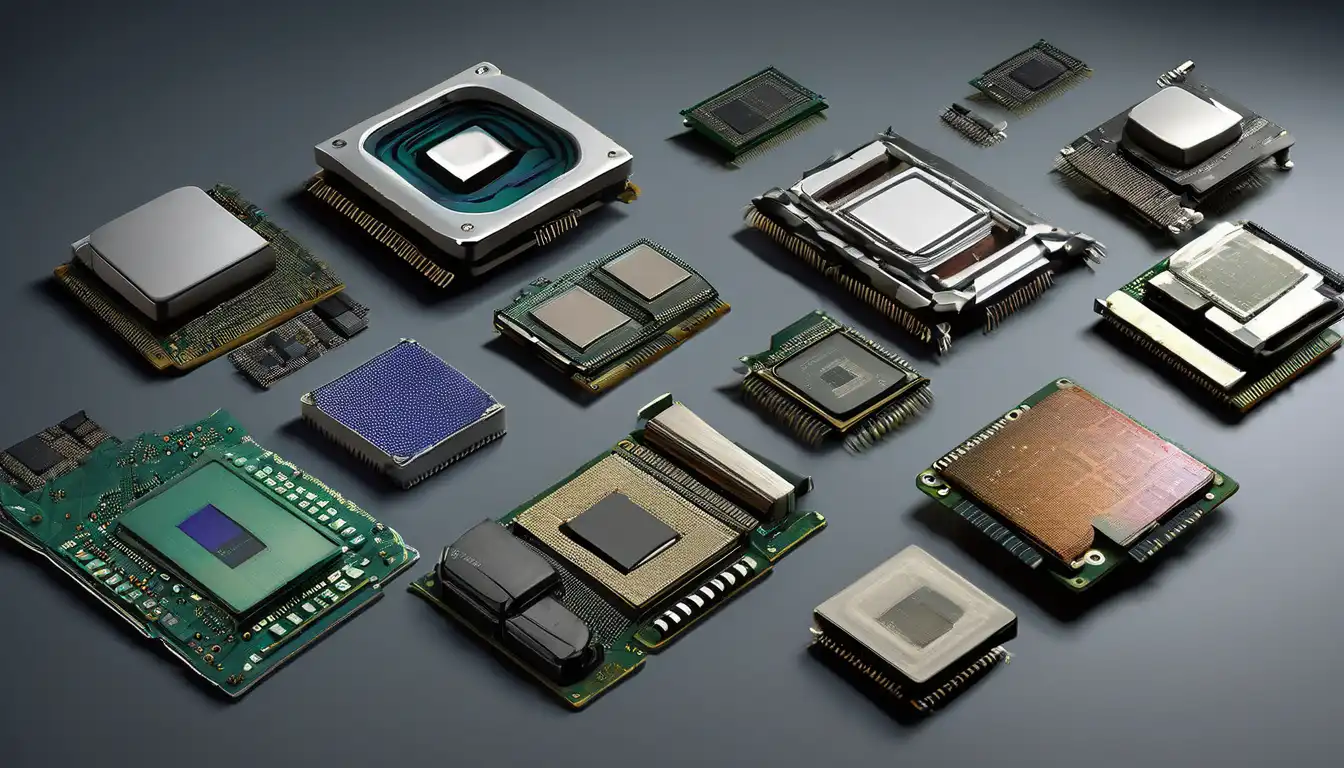The Dawn of Computing: Vacuum Tube Era (1940s-1950s)
The evolution of computer processors began with massive vacuum tube-based systems that occupied entire rooms. These early processors, such as the ENIAC (Electronic Numerical Integrator and Computer), used approximately 17,000 vacuum tubes and consumed enormous amounts of electricity. Despite their limitations, these pioneering machines laid the foundation for modern computing by demonstrating the potential of electronic calculation.
Vacuum tube processors operated at speeds measured in kilohertz and required constant maintenance due to tube failures. The UNIVAC I, introduced in 1951, represented a significant advancement as one of the first commercial computers using this technology. These early systems were primarily used for scientific calculations and military applications, marking the beginning of the digital age.
The Transistor Revolution (1950s-1960s)
The invention of the transistor in 1947 by Bell Labs scientists revolutionized processor technology. Transistors were smaller, more reliable, and consumed significantly less power than vacuum tubes. This breakthrough led to the development of second-generation computers that were more compact and efficient.
IBM's 700 series computers exemplified this transition, offering improved performance and reliability. The introduction of the integrated circuit in 1958 by Jack Kilby and Robert Noyce further accelerated processor evolution. This innovation allowed multiple transistors to be fabricated on a single silicon chip, paving the way for more complex processor designs.
The Microprocessor Breakthrough (1970s)
The 1970s witnessed one of the most significant milestones in processor evolution: the invention of the microprocessor. Intel's 4004, released in 1971, was the first commercially available microprocessor containing 2,300 transistors on a single chip. This 4-bit processor operated at 740 kHz and demonstrated the potential of putting an entire central processing unit on one integrated circuit.
Subsequent processors like the Intel 8008 and 8080 expanded capabilities, leading to the development of personal computers. The MOS Technology 6502, used in popular systems like the Apple II and Commodore 64, brought computing power to the masses at affordable prices. This era marked the beginning of the personal computing revolution that would transform society.
Key Innovations of the 1970s
- First commercial microprocessors
- Reduced instruction set computing concepts
- Improved manufacturing processes
- Emergence of personal computing
The x86 Architecture Dominance (1980s-1990s)
Intel's 8086 processor, introduced in 1978, established the x86 architecture that would dominate personal computing for decades. The IBM PC's adoption of the 8088 processor in 1981 cemented x86 as the industry standard. Throughout the 1980s and 1990s, processors evolved through several generations with increasing clock speeds and capabilities.
The 80386 introduced 32-bit processing in 1985, while the 80486 added integrated math coprocessor functionality. Intel's Pentium processors, launched in 1993, brought superscalar architecture allowing multiple instructions per clock cycle. Competitors like AMD emerged with compatible processors, driving innovation and competition in the market.
The GHz Race and Multicore Revolution (2000s)
The early 2000s saw intense competition in processor clock speeds, with Intel and AMD pushing frequencies beyond 1 GHz. However, physical limitations and power consumption concerns led to a fundamental shift toward multicore architectures. Intel's Core 2 Duo processors in 2006 demonstrated the advantages of multiple processing cores on a single chip.
This multicore approach allowed for better performance per watt and improved multitasking capabilities. The industry transitioned from focusing solely on clock speed to optimizing overall system performance through parallel processing. This era also saw the rise of mobile processors optimized for battery life and thermal efficiency.
Major Architectural Advances
- 64-bit computing adoption
- Hyper-threading technology
- Integrated memory controllers
- Advanced power management features
Modern Processor Technologies (2010s-Present)
Contemporary processors incorporate sophisticated technologies like AI acceleration, advanced manufacturing processes down to 3 nanometers, and heterogeneous computing architectures. Apple's M-series processors demonstrate how custom silicon can optimize performance for specific applications. Meanwhile, AMD's Ryzen processors have reestablished competition in the high-performance computing market.
The current era focuses on specialized processing units for AI workloads, graphics, and neural network acceleration. Processors now integrate security features directly into hardware and employ advanced predictive algorithms for performance optimization. The evolution continues toward more energy-efficient designs capable of handling increasingly complex computational tasks.
Future Directions and Emerging Technologies
The future of processor evolution points toward several exciting developments. Quantum computing represents a fundamental shift in processing methodology, while neuromorphic computing aims to mimic the human brain's efficiency. Photonic processors using light instead of electricity offer potential for dramatically increased speeds and reduced energy consumption.
Three-dimensional chip stacking and advanced packaging technologies will continue to push performance boundaries. As we approach physical limits of silicon-based computing, researchers are exploring alternative materials like graphene and carbon nanotubes. The ongoing evolution promises even more remarkable advances in computational capability and efficiency.
The journey from room-sized vacuum tube computers to pocket-sized supercomputers demonstrates one of technology's most remarkable evolution stories. Each generation of processors has built upon previous innovations while introducing groundbreaking new concepts. As computing needs continue to grow and change, processor technology will undoubtedly continue its fascinating evolution.
For more information about computing history, check out our articles on the evolution of computer memory and storage technology developments. Understanding how processors interact with other system components provides valuable context for appreciating their evolutionary journey.
